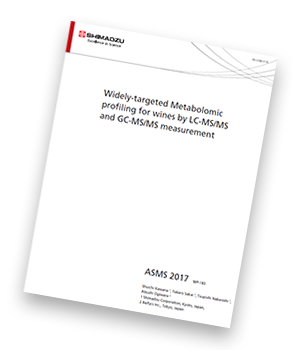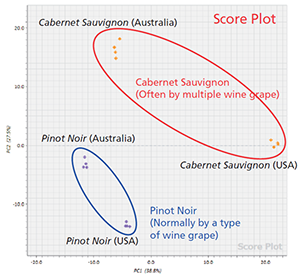This article introduces the use of both LC-MS/MS and GC-MS/MS for targeted metabolomic profiling of wines.
 Many of us have wine preferences from different regions of the world. One of the key contributing factors for such preference is the metabolite composition of wines which might be specific to different regions. This profile not only puts a scientific rationale to the taste of wines but also serves as a measure for geographical authentication and a strong counter to mislabelling. Foodomics, a type of metabolomic analysis, is commonly applied for this purpose and could provide insights on the flavour and taste of wine.
Many of us have wine preferences from different regions of the world. One of the key contributing factors for such preference is the metabolite composition of wines which might be specific to different regions. This profile not only puts a scientific rationale to the taste of wines but also serves as a measure for geographical authentication and a strong counter to mislabelling. Foodomics, a type of metabolomic analysis, is commonly applied for this purpose and could provide insights on the flavour and taste of wine.
This article introduces the use of both LC-MS/MS (LCMS-8060) and GC-MS/MS (GCMS-TQ 8040) for targeted metabolomic profiling of wines. Different types of wine and their cultivation locations were investigated and the metabolomic profiles were compared. Statistical analysis (PCA) was conducted to evaluate and determine the key characteristic analytes/biomarkers, which are affected by origin and fermentation process, eventually influencing quality of wine.

Score plot for GC-MS/MS analysis of metabolites for the different wines
(different types and country of origin).
Download this application note...
- Learn to utilize both LC-MS/MS and GC-MS/MS for a comprehensive metabolomic analysis of wines
- Compare the differences in metabolite profiles and identify the characteristic components in different types of wine and cultivation locations.




